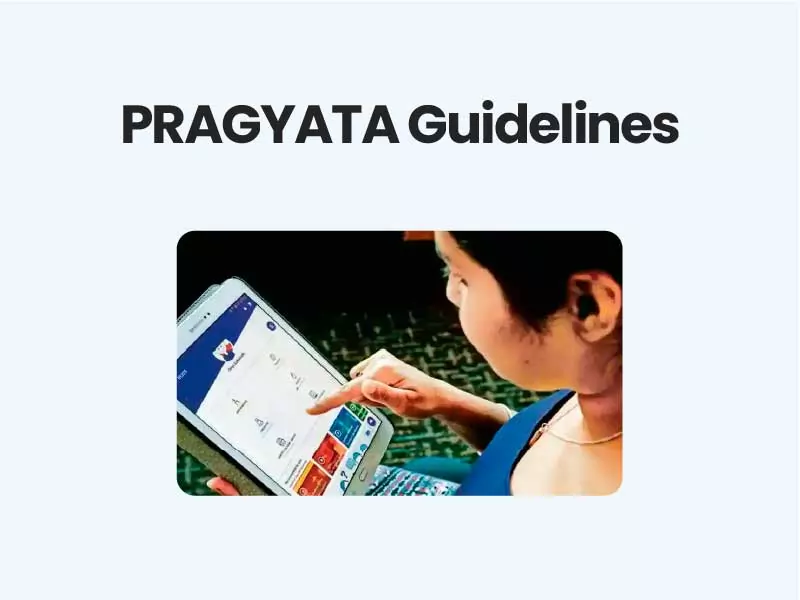Companion@360 → 7 Month programme to sharpen your writing skills → REGISTER NOW

COVID-19 pandemic has disrupted normal life including school education. The spread pandemic has led to the closure of schools and has impacted over 240 million children of the country who are enrolled in schools. Extended closure of schools may have caused a loss of learning among students. To mitigate the impact school education has to be remodelled and revamped. Digital education is considered the most convenient method in this regard.
Advantages of digital education
While digital / online education cannot replace classroom education, it has following advantages.
- It allows flexible and personalized learning at the speed of the learner.
- Digital content an be continuously augment and delivered to much larger audience through digital means conveniently.
- It facilitate education at finger tip without movement of children outside their home.
- The rapid increase in internet penetration and various government initiatives such as Digital India campaign have created a conducive environment for moving towards digital education.
Read Also Chabahar Port Project
Government initiative to promote digital education
PM e-Vidya by the Ministry of Human Resource Development (MHRD), is a national campaign which will unify all efforts related to digital/online/on-air education. This included
- DIKSHA (one nation – one digital platform),
- TV (one class-one channel),
- SWAYAM (online MOOCS on various topics),
- IITPAL (platform for exam preparation),
- AIR (through community radio and CBSE Shiksha Vani podcast)
- Study materials for differently abled students developed by NIOS.
- Screen time : Children exposed to digital technologies/gadgets for a longer time are prone to severe health issues.
- Cyber safety and security : children are vulnerable and easy target for cyber crimes and their digital privacy is a concern
- Mental and physical health and well-being : children have been complaining of postural defects, ophthalmic issues, and other physical problems owing to long hours before digital screens.
- Digital divide : Unequal access to technology among different sections of society makes online education inaccessible and discriminative.
- Digital infrastructure inadequacy : Poor internet penetration in rural and remote areas limits the scope of digital education.
PRAGYATA Guidelines for digital education
PRAGYATA Guidelines focus on all stakeholders such as teachers, parents and students separately.
- The PRAGYATA guidelines include eight steps of online/ digital learning that is, Plan- Review- Arrange- Guide- Yak(talk)- Assign- Track- Appreciate. These steps guide the planning and implementation of digital education step by step with examples.
- Age-appropriate schedule for digital education to avoid long hours of screen time and excess use of gadgets.
- Emphasis the need to unify all efforts related to digital/ online/on-air education, benefitting school going children across the country.
- For parents, the guideline helps to understand the need for physical, mental health and wellbeing along with the cyber safety measures for children at home.
- Emphasis on balanced online and offline activities keeping the screen time as an essential parameter.
- Stress on inclusiveness, i.e no one is lest behind due unequal access to technology.
Conclusion
While digital education is the most effective way for continuing education during lockdown period, a country like India characterised by multifarious diversity and constraints in terms of availability of resources (ICT infrastructure, electricity, budget, skilled manpower) switching over to digital modes of education is full of challenges. The guidelines emphasis on continuous learning while addressing the challenges in digital education.
Read Also World Bank’s STARS project
